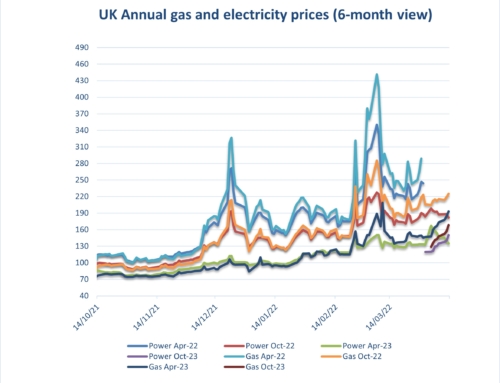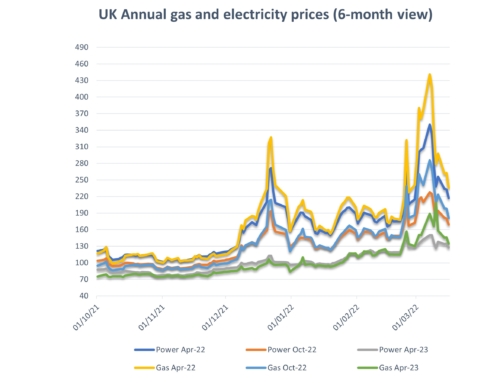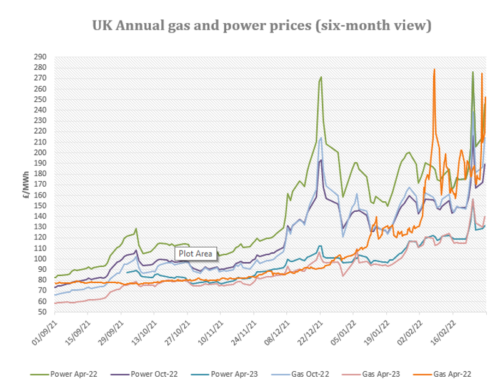Energy costs: Short term gas and electricity markets continued to take a battering over the last fortnight, with month ahead prices falling to a 22-year low due to expectations of continued reduced consumption and oversupply despite the gradual lifting of global lockdown measures. In turn, this fed through to longer term gas markets, bringing Winter 2020 gas down by 7% with progressively smaller losses for delivery further out. Increasing oil prices as OPEC production cuts ramped up failed to offer support. Meanwhile, longer term electricity prices were choppy but took support from concerns over French nuclear output and rising carbon markets. Cooler, wetter and windier weather over the coming week may cause further losses, but are likely to be stemmed as the weather improves into mid-June.
Upside:
Outages – The markets continue to be affected by a variety of outages across the continent including EDF’s continued French nuclear problems and Norwegian gas maintenance.
Demand – Demand will continue to increase as the world emerges from lockdown. However, it is not likely to return to pre-Covid levels for some months and in the UK sits at a 38-year low.
Oil markets – Oil markets have strengthened in recent weeks and may continue to do so as OPEC production cuts continue, potentially affecting gas production and prices.
LNG– Prices/demand have decreased significantly as storage in Europe and Asia rose further.
Downside:
Carbon costs – EUA’s rose by 13% over the last fortnight due to restricted sales for allowances and expectations of increasing industrial production and pollution levels as Europe emerges from lockdown.
Gas storage – This remains significantly high across Europe at 73% fullness; compared to 61% fullness this time last year.
Could Go Either Way:
Sterling – Brexit negotiations have returned to the news over the last fortnight. Problems in this area will feed through to exchange rates and impact energy prices.
Renewable Generation – Combined wind/solar output are expected to be changeable over the coming fortnight.
Non-energy costs:
On the electricity side organisations will see further increases in pass through costs from both government and industry infrastructure providers in the coming months as distribution, Electricity Market Reform (EMR),Capacity Market and Energy Intensive Industries (EII) charges are ramped up. Revised non-energy cost predictions are awaited, although delayed by the pandemic.
Climate change levy (CCL) again change on April 1st. Please see the attached pass through charge information for details. Your CCA related CCL exemption rates will change at the same time (Gas to 81%, Electricity to 92%). Please ensure your PP11 forms are updated and sent through.
Is your organisation covered by the new Streamlined Energy and Carbon Reporting (SECR) scheme?
Designed to replace in part the Carbon Reduction Commitment (CRC) which ends this year and to follow on from the energy savings recommendations generated by ESOS compliance. Note, SECR will cover a wider scope of organisations than CRC and ESOS do. Full details are attached below.
SECR will require all large enterprises to disclose within their annual financial filing obligations to Companies House, their greenhouse gas emissions, energy usage (from gas, electricity and transportation as a minimum), energy efficiency actions and progress against at least one intensity ratio.
The scheme came into effect on April 1st, 2019 and will be required to be included in the first set of accounts published for financial years starting after this date.
The scheme covers publicly quoted companies (extending their current disclosure requirements) and UK incorporated companies or LLPs with two or more of the following.
- More than 250 employees
- A turnover in excess of £36 million
- A balance sheet in excess of £18 million.
UK subsidiaries, who meet the eligibility criteria, but are covered by a parent group’s report (unless the parent group is registered outside the UK) and companies using less than 40,000 kWh of energy during the reporting year do not have to provide disclosure. Note the reporting year should be aligned to your financial year.
Are you eligible for an EII rebate?
Under current rules, if you qualify at an industry sector level and your business passes the 20% electricity intensity test you may qualify for exemption to CFD and RO charges. Please see the attached Government RO/CFD guidance document and update and give Abby a call on the main number to discuss this further.
A copy of our detailed market report is available: Eneco Market Information early June 2020
Gas and electricity prices from 2009 to date are available here: Eneco Gas and Electricity Pricing Trends Sept 2009 to early June 2020
A copy of our environmental charges and Climate Change Levy rates from 2012 to date: Environmental Pass Through Charges and CCL ppkWh Updated 25.03.20 (1)
A copy of RO/CFD guidance document: RO_CFD_Guidance_Revised_July_2018
SECR: SECR EA Guidelines




